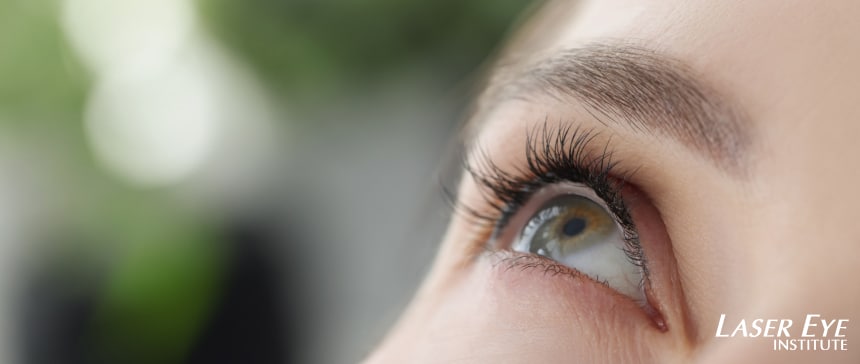Is SMILE Effective for Treating Astigmatism? (What You Need to Know)
SMILE (Small Incision Lenticule Extraction) is a breakthrough in minimally invasive vision correction. This technology is designed to address common visual impairments including myopia (nearsightedness), and astigmatism. When you have astigmatism, your eye struggles to properly channel light onto the retina, the sensitive layer of cells lining the back of your eye. This typically stems from an irregularly shaped cornea or occasionally from abnormalities in the eye’s natural lens. All of this results in unclear or distorted vision which can frequently be corrected with a procedure called SMILE. During a SMILE procedure for astigmatism, the doctor employs advanced laser technology to create and extract a tiny lens-shaped piece of corneal tissue through a micro-incision, effectively reshaping the cornea to correct vision. Given that astigmatism is caused by corneal irregularities, SMILE offers an excellent solution for individuals struggling with this common vision problem.
How Successful is SMILE for Correcting Astigmatism?
SMILE’s effectiveness in correcting astigmatism varies depending on the severity of each case. For individuals with mild to moderate astigmatism, SMILE typically decreases or eliminates dependence on contact lenses or eyeglasses. This subtle reshaping reconfigures how the cornea directs light toward the retina. However, patients with severe astigmatism should note that SMILE might not completely eliminate their vision irregularities. The occasional use of glasses or contacts may still be necessary, though typically with a substantially weaker prescription.
While SMILE has an excellent safety profile, astigmatic patients should be aware of certain potential complications. These include the possibility of incomplete correction or overcorrection, which might require a follow-up “enhancement” procedure. Some individuals might also experience temporary visual phenomena such as starbursts around lights, halos, or challenges with nighttime vision following surgery. Before pursuing SMILE treatment, all patients must have a thorough consultation with Dr. Haddad to make the most informed decision.
Determining if You’re a Good Candidate for SMILE with Astigmatism
A SMILE evaluation involves a comprehensive assessment of multiple factors like your specific astigmatism measurements, overall eye health, and prescription stability. To be a candidate for SMILE, your astigmatism should fall within treatable parameters, and your eyes must be fundamentally healthy without significant underlying conditions that could compromise outcomes.
The screening process includes an in-depth consultation where Dr. Haddad will evaluate your corneal topography, corneal thickness, and other important details. Patients considering Laser Eye Institute can rest assured knowing that LEI has invested in the most comprehensive pre-operative diagnostic equipment. This allows Dr. Haddad to determine a patient’s candidacy for the various laser vision correction options. If SMILE ends up being a bad option, other alternative procedures like LASIK or PRK might be better aligned with your specific situation.
Other Vision Correction Options for Astigmatism Beyond SMILE
While SMILE is a cutting-edge approach to astigmatism treatment, it’s just one of several solutions available. LASIK (Laser-Assisted In Situ Keratomileusis) and PRK (Photorefractive Keratectomy) remain popular and proven alternatives for addressing astigmatism.
LASIK employs a different methodology than SMILE by creating a hinged flap in the corneal surface to access the underlying tissue. An excimer laser then precisely removes microscopic amounts of tissue to reshape the cornea’s curvature, thereby enhancing focus. LASIK has demonstrated remarkable success in correcting astigmatism and might be recommended for patients whose corneal characteristics or astigmatism patterns aren’t ideally suited for SMILE.
PRK, the pioneering predecessor to both SMILE and LASIK, offers another viable pathway for astigmatism correction. Unlike SMILE’s minimally invasive approach or LASIK’s flap creation, PRK involves gently removing the cornea’s outer epithelial layer before applying laser reshaping directly to the corneal surface. This technique eliminates any flap-related concerns, making it a superior option for individuals with thinner corneas, those participating in high-impact sports, or professionals in occupations where corneal injuries pose a significant risk.
For those seeking non-surgical management of astigmatism, several options exist that focus on compensating for corneal irregularities to optimize light focusing on the retina. Prescription eyeglasses and specialized contact lenses remain the traditional approaches for astigmatism management. Toric contact lenses, designed with different powers in different meridians, offer effective correction for certain astigmatism presentations. Orthokeratology (“ortho-k”) provides yet another non-surgical alternative, using rigid gas-permeable contact lenses worn during sleep to temporarily reconfigure the cornea, providing improved vision throughout the following day.
Final Thoughts
In a large number of cases, astigmatism can be managed and improved with procedures like SMILE, LASIK, and PRK. If you or a loved one has astigmatism, SMILE may be an excellent option to help improve or restore your vision. Are you ready to finally start seeing clearly without the need for eyeglasses or contact lenses? Get started by scheduling a free SMILE consultation with Dr. Haddad today. Or if you’re still deciding, schedule a 15-minute phone call with a vision correction coordinator, OR take this quick quiz to find out if SMILE, LASIK, or PRK is right for you.
Share This Article
Posted by Dave Lemieux
David Lemieux, BA from Oakland University is a LASIK expert and marketing professional that has worked with Dr. Dan Haddad and the Laser Eye Institute since 2017. David believes in education and cutting through the noise to deliver facts and opinions about LASIK, SMILE, and all things Laser Vision Correction.
